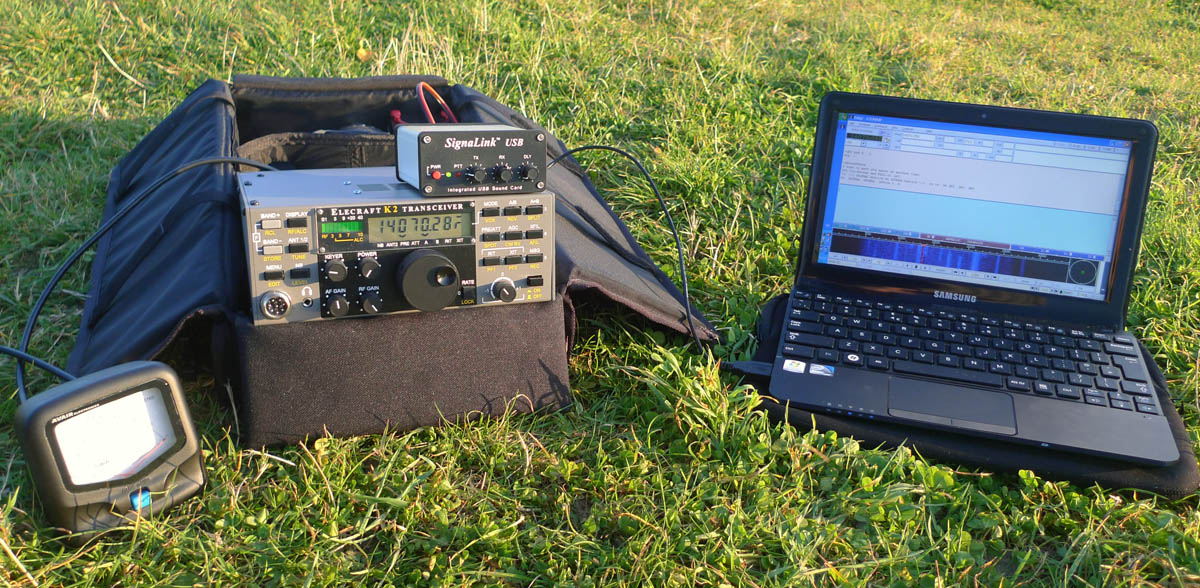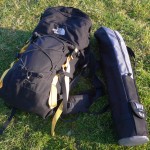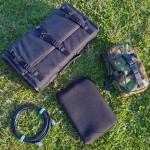I have an interest in portable Amateur Radio operation, mainly revolving around the following factors…
- No fixed antennas at my current QTH
- The opportunity for uninterrupted radio time
- I enjoy the great outdoors
- Something about the simplicity of a self-contained backpack radio kit pleases me!
My current portable kit fits into a 40L backpack and my tripod carry case and consists of the following equipment:
- PowerPort Radio Box containing:
- Radio: Elecraft K2
- Battery: Yuasa 12V 3.2Ah Sealed Lead-Acid
- Power/SWR meter: Avair AV-20
- Hand-mic (it just seems wrong not to have one!)
- Short patch lead TXR to PWR meter
- Data modes kit:
- Samsung NP NC-110 netbook running
- Windows XP
- FLDigi for data modes
- WSPR for antenna comparisons
- QuickMix to quickly recall the correct sound card settings to drive the SignaLink interface
- Tigertronics SignaLink USB interface
- Samsung NP NC-110 netbook running
- Antenna:
- MFJ-1977 12-foot telescopic vertical whip mounted on…
- Giottos camera tripod
- SGC SG-211 Mini Smartuner battery-powered auto ATU
- 8m tape measure radial
- 5m and/or 10m RG58 lead
There are many improvements to be made (lower weight, improve antenna performance…) but this is an initial set of kit that gets me out of the house and on the air.
A couple of points about the netbook configuration may be useful to others. The SignaLink interface keys the radio by vox so the sound output from the computer needs to be managed carefully. QuickMix allows saving and loading of previous soundcard mixer settings and this allows me to quickly recall an appropriate level to activate PTT on the SignaLink (too low and the PTT won’t activate and because you’re not outputting to speakers it’s very easy to miss the fact that it may have been accidentally lowered or muted). Windows system sounds should also be suppressed to avoid keying the radio with any pings and ding-dongs Windows may throw at you – in Control Panel, Sounds and Audio Devices Properties, Sounds tab there is a sound scheme “No Sounds”. Selecting this silences the Windows system sounds.
Secondly, sometimes it is useful when out and about to have the netbook connect to the Internet e.g. run WSPR in the field to make near-real time comparisons of antenna performance and receive the reception reports from the Internet database. I can do this by running my Android smartphone as a mobile wifi hotspot (subject to cellular network coverage). However, when connecting the computer to the Internet in this way, I only want specific programs to be able to access the connection and I don’t want Windows, Adobe, Google or any other software updates running over this link to take me closer to mobile data limits and excessively drain the battery on my phone. I’m currently setting up Comodo firewall to ‘white list’ Internet access when I’m using the computer in this mode.





Woah! you are a ham too! Yeah I just posted on your other page abt 5 way switches. It sure seems that birds of a feather flock together!
— Mike WB8ERJ
Nice page and website. Your recent endeavours on kite antenna flying are so colourful that they should be added soon – with maximum photographic content. The South Downs sites are so beautiful in their own right and your radio set-up deserves greater exposure – and to help others.
73 de Ted, G4ELM
Nice article, I’ve been looking for ideas to take my K2 portable with my buddipole antenna. I like your thoughts.
72 de Jim, W0JBS